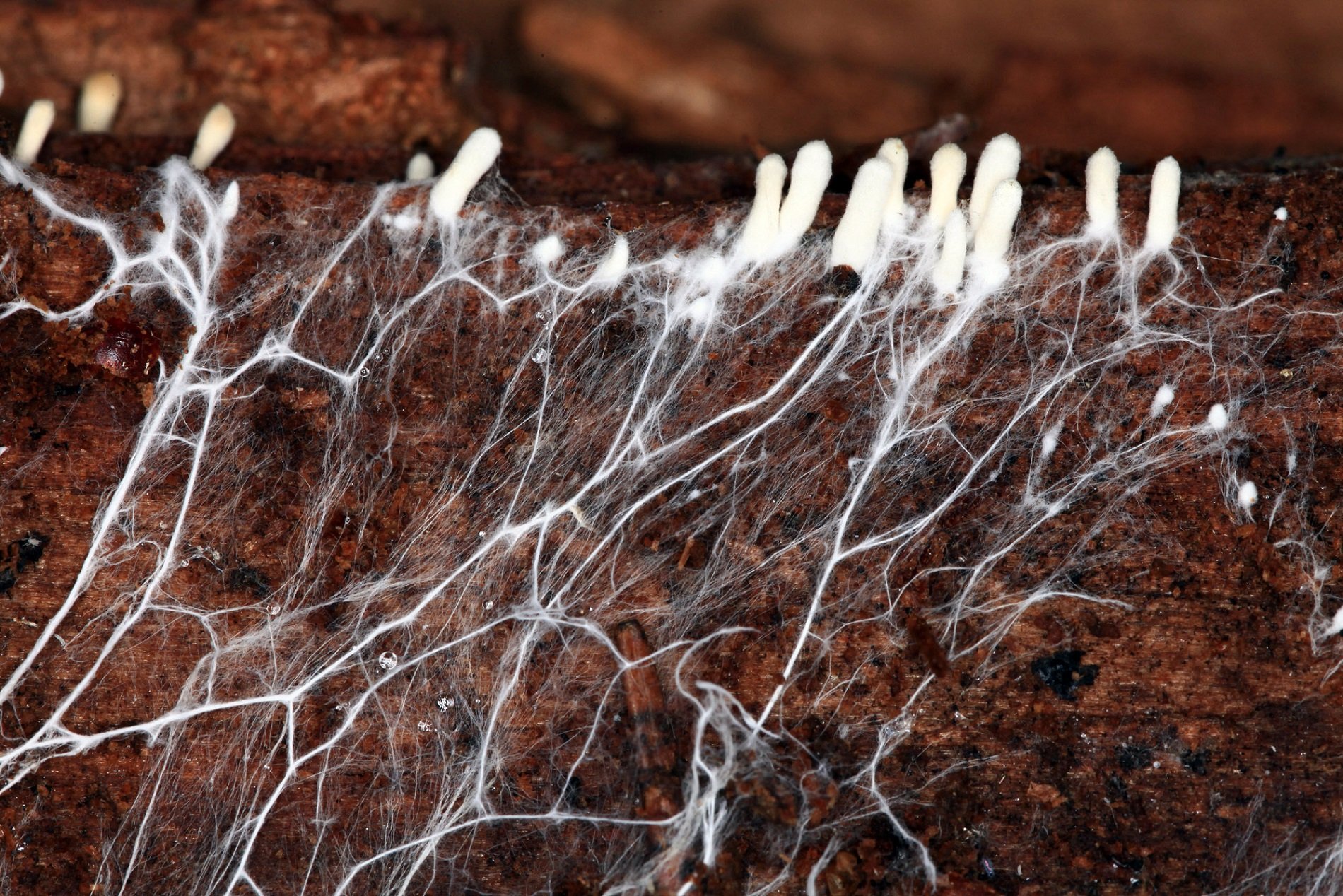An astonishing revelation in climate science has emerged from a study published in the peer-reviewed scientific journal Current Biology: the vast, unseen network of mycorrhizal fungi that spans the globe is responsible for storing a significant portion of our planet's carbon.
Image Credit: Kichigin via Shutterstock / HDR tune by Universal-Sci
Mycorrhizal fungi, though often overlooked, play a critical role in the global carbon cycle, influencing both carbon sequestration and emission in terrestrial ecosystems. Holding up to approximately 36% of yearly global fossil fuel emissions below ground, these subterranean fungi work quietly but effectively to help soften the blow of climate change.
The intruiging study published by a team of international scientists also emphasizes the fungi's crucial role in supporting global biodiversity. Researchers are advocating for these organisms to be given more weight in conservation and biodiversity policies, and are exploring possibilities for enhancing the carbon-storing capacity of soils.
The Underground Carbon Vault
The research looks at the global carbon cycle from an entirely new angle, showing that the network of mycorrhizal fungi stores more than 13.12 gigatons of carbon across the world. exceeding even the yearly carbon emissions of China. This conversion transforms the soil into a colossal carbon pool, making it the most effective carbon capture and storage unit in the world.
While it was previously known that mycorrhizal fungi, in symbiotic relationships with land plants, help to store carbon in the soil, the extent of their contribution has only now been revealed. This discovery underscores the importance of these fungi in the battle against climate change and the global pursuit of net-zero emissions.
So How do Mycorrhizal Fungi Influence Soil Health?
The paper explains that Mycorrhizal fungi, a kind of fungi that grows in harmony (mutually beneficial) with plants, release substances like simple sugars and organic acids into the soil. These substances, rich in carbon and nitrogen, are absorbed and used by other tiny creatures in the soil.
Interesting article: How plants rely on friendly fungal bodyguards (Universal-Sci)
This process transforms the carbon into a very stable form, known as mineral-associated organic matter. This contributes significantly to carbon sequestration, which is a way of capturing and storing carbon to help combat climate change.
It's important to note that the carbon released by mycorrhizal fungi and the secretions from plant roots play a key role in how carbon behaves in the soil. These secretions, let out into the area surrounding the roots, can boost the growth of bacteria and enhance the process of breaking down minerals and making nutrients available. This activity greatly affects how carbon moves and changes in the soil, which has a big impact on the overall cycle of carbon in the environment.
Despite their role in channeling plant carbon into the soil, mycorrhizal fungi also contribute to carbon loss through respiration and decomposition processes. These losses are variable, depending on factors like species, environmental conditions, and photosynthate availability.
Additionally, the phenomenon known as 'priming'—where old soil carbon is decomposed due to the addition of new soil carbon—also influences carbon cycling. Mycorrhizal fungi can increase or decrease this effect, influencing the soil carbon turnover rate and carbon emissions.
The Future of Fungal Conservation
Given the fungi's pivotal role in carbon sequestration, researchers are urging policymakers to incorporate mycorrhizal fungi in conservation strategies. With warnings from the UN that 90% of soils could be degraded by 2050, taking action is of paramount importance not only for climate change but also for crop and plant productivity.
Professor Katie Field, a co-author of the study, emphasized the urgent need to protect these fungal networks, saying, "Mycorrhizal fungi represent a blind spot in carbon modeling, conservation, and restoration. When we disrupt the ancient life support systems in the soil, we sabotage our efforts to limit global heating and undermine the ecosystems on which we depend."
Image Credit: ohenze / HDR tune by Universal-Sci
More things to learn
Scientists are now investigating the lifespan of carbon storage within the fungi and plan to further study the role that fungi play in Earth's ecosystems.
Dr Heidi Hawkins, the study's lead author, noted, "A major gap in our knowledge is the permanence of carbon within mycorrhizal structures. We do know that it is a flux, with some being retained in mycorrhizal structures while the fungus lives, and even after it dies. Some will be decomposed into small carbon molecules and from there either bind to particles in the soil or even be reused by plants."
This groundbreaking study shines a light on the subterranean world of fungi, underscoring their profound yet overlooked role in the carbon cycle. As scientists continue to uncover the mysteries of these unseen networks, it is clear that mycorrhizal fungi will have a crucial part to play in our efforts to combat climate change.
If you would like to have a more detailed look at the study, be sure to check out the paper published in Current Biology, listed below.
Sources and further reading:
Mycorrhizal mycelium as a global carbon pool (Current Biology)
How plants rely on friendly fungal bodyguards (Universal-Sci)
The future of leather might be based on mushrooms! (Universal-Sci)
Why building Mars habitats from fungi instead of metal is a brilliant idea (Universal-Sci)
Too busy to follow science news during the week? - Consider subscribing to our (free) newsletter - (Universal-Sci Weekly) - and get the 5 most interesting science articles of the week in your inbox
FEATURED ARTICLES:










